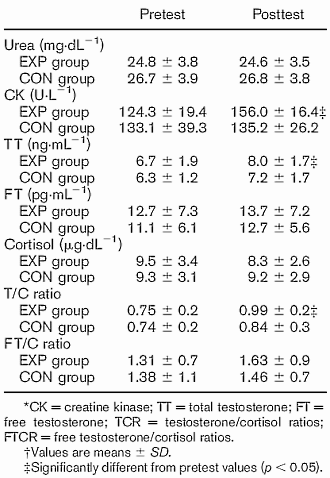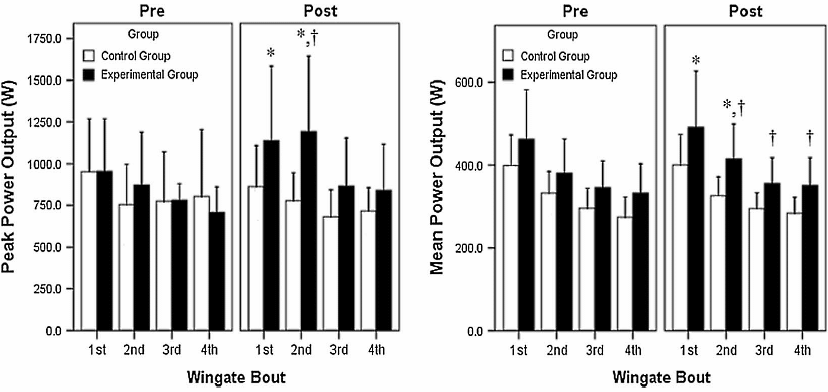Increasing the level of physical fitness for competition is the primary goal of any conditioning program for wrestlers. Wrestlers often need to peak for competitions several times over an annual training cycle. Additionally, the scheduling of these competitions does not always match an ideal periodization plan and may require a modified training program to achieve a high level of competitive fitness in a short-time frame. The purpose of this study was to examine the effects of 4 weeks of sprint-interval training (SIT) program, on selected aerobic and anaerobic performance indices, and hormonal and hematological adaptations, when added to the traditional Iranian training of wrestlers in their preseason phase. Fifteen trained wrestlers were assigned to either an experimental (EXP) or a control (CON) group. Both groups followed a traditional preparation phase consisting of learning and drilling technique, live wrestling and weight training for 4 weeks. In addition, the EXP group performed a running-based SIT protocol. The SIT consisted of 6 35-m sprints at maximum effort with a 10-second recovery between each sprint. The SIT protocol was performed in 2 sessions per week, for the 4 weeks of the study. Before and after the 4-week training program, pre and posttesting was performed on each subject on the following: a graded exercise test (GXT) to determine VO(2)max, the velocity associated with V(2)max (νVO(2)max), maximal ventilation, and peak oxygen pulse; a time to exhaustion test (T(max)) at their νVO(2)max; and 4 successive Wingate tests with a 4-minute recovery between each trial for the determination of peak and mean power output (PPO, MPO). Resting blood samples were also collected at the beginning of each pre and posttesting period, before and after the 4-week training program. The EXP group showed significant improvements in VO(2)max (+5.4%), peak oxygen pulse (+7.7%) and T(max) (+32.2%) compared with pretesting. The EXP group produced significant increases in PPO and MPO during the Wingate testing compared with pretesting (p < 0.05). After the 4-week training program, total testosterone and the total testosterone/cortisol ratio increased significantly in the EXP group, whereas cortisol tended to decrease (p = 0.06). The current findings indicate that the addition of an SIT program with short recovery can improve both aerobic and anaerobic performances in trained wrestlers during the preseason phase. The hormonal changes seen suggest training-induced anabolic adaptations.


